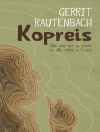The Travels of Marco Polo (Vol. 1&2) is a monumental exploration of medieval experiences across vast and diverse landscapes. This collection spans a rich tapestry of genres from anecdotal narratives, geographic descriptions to historical accounts, capturing the curiosity and thirst for knowledge intrinsic to the 13th century. Its narratives traverse through bustling bazaars, imperial courts, and mystical lands, offering a plethora of voices and stories that collectively forge a path of discovery. Among its significant sections, tales of the Great Khan’s court and the intricate network of Silk Road trading routes stand out, illustrating the blend of myth and reality that characterizes medieval travel literature. The collaborative efforts of Marco Polo, a Venetian merchant, and Rustichello of Pisa, a skilled writer, are instrumental in bringing these epochal adventures to life. Their diverse backgrounds, melding the mercantile prowess of the west with the literary finesse of the Italian peninsula, give the work a distinctive voice that resonates with the spirit of exploration. This anthology aligns itself with the broader medieval tradition of travel tales, offering a window into cross-cultural exchanges and the burgeoning global consciousness of the era. Recommended for anyone eager to delve into historical currents and narratives, this anthology offers a distinct synthesis of observation, imagination, and recorded history. It allows readers to explore numerous cultures through the lenses of Polo’s travels, presenting a chorus of perspectives that transcends the limitations of time. The depth of exploration makes it a valuable educational resource, fostering an appreciation for the multicultural dialogues that have shaped our histories.
Sobre o autor
Marco Polo, the Venetian merchant, explorer, and writer, born in the Republic of Venice around 1254, is renowned for his pioneering travels through Asia. His extensive journeys are principally chronicled in ‘Il Milione, ‘ often referred to in English as ‘The Travels of Marco Polo.’ This seminal work, traditionally divided into two volumes, was possibly co-written by Rustichello da Pisa during Polo’s imprisonment in Genoa after the naval Battle of Curzola. Polo’s narrative, though questioned by some scholars for its embellished and occasionally inconsistent details, is esteemed for its rich descriptions of 13th-century Eurasia, providing a comprehensive glimpse into the vast expanse of the Mongol empire under Kublai Khan, Polo’s encounters with diverse cultures, and myriad marvels of the medieval world. His literary style blends factual observation with the marvelous, thereby permeating his prose with an aura of adventure that has captivated readers for centuries. ‘The Travels of Marco Polo’ significantly influenced subsequent cartographic science and exploration, fostering an enduring Western fascination with the East. Marco Polo’s indelible impact upon the imagination and knowledge of Europe merits his place as an essential figure in the annals of travel literature and early intercultural exchange. Despite controversies over the veracity of his accounts, his contributions to the worldview of his contemporaries are undisputed, making his work a cornerstone of historical and geographical literature.












